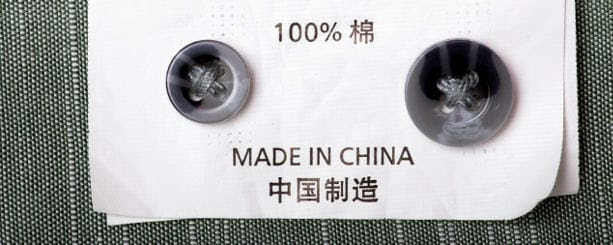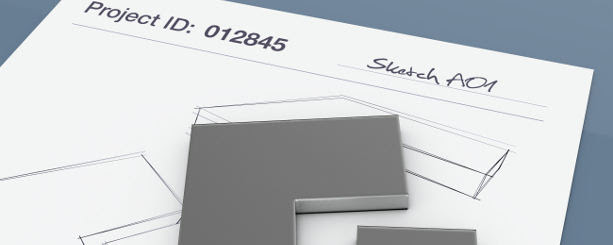A complete China Business guide available for you.
For only USD$15/book
Also available in E-Book Format just for USD$10/E-Book
Get your copy now....
don't wait until others are welthier than you..
They already making Millions by doing business with China manufacturers
Why wait and see, instead of doing it now...
Contact us; +60126694217 (Whatsapp/Call)
Email us: alveolegame@gmail.com
NOW
Importing Insider Newsletter
Stay ahead of your competitors. Get access to our latest content.
In this article, we explain what every importer must know about labeling requirements in the EU, US and Australia.
We also explain why you cannot rely on your manufacturer to ensure compliance on your behalf. In fact, most of them don’t even know how products must be labeled in your market.
Keep reading, to ensure that your products are not seized by the customs authorities!
What is ‘Product Labeling Requirements’?
Most countries have legal requirements for how a product shall be labeled. A label can, for example, inform the customer about the following:
- The manufacturing country
- If the product meets certain legal safety requirements (i.e., compliance marks)
- Size, material and other general product information
- Warning labels and user instructions
Some labeling requirements apply to all, or a wide range of, product categories.
For example, all products in the US must be labelled with the country of origin (i.e., Made in China). In the European Union, many products must be CE marked.
Other labeling requirements apply to specific products. Examples include toys, electronics and textiles – each with their own set of unique labeling requirements.
Notice that labeling requirements are usually just one of many requirements that importers must fulfil to ensure compliance with certain regulations.
In addition, you may need to keep track of the following:
Technical Compliance: This means that the product is manufactured according to certain technical standards, or substance restrictions. The product is therefore able to pass the necessary tests.
Documents Requirements: The Importer is required to create and store a set of documents. Such documents may include circuit diagrams, component lists, design drawings and risk assessments.
It is important to underline that this article does not include information above the two points above.
Can I trust my manufacturer in Asia to ensure compliance with all applicable Labeling Requirements in my market?
Absolutely not. Most manufacturers in China, and elsewhere in Asia, are not aware of overseas labeling requirements.
Manufacturers are not supposed to provide you with free legal advice. Instead, they expect you to provide them with “ready made” labeling files.
Thus, it is always, and without exception, up to the importer to ensure that the labels contain the required information.
This is also an issue with “wholesale products” (i.e., ready made items), as such products are not made specifically with US, EU or other labeling requirements in mind.
Hence, “Made for China” products tend to be non-compliant with foreign labeling requirements.
How do I communicate the Labeling Requirements to the supplier?
First, you need to research which labeling requirements apply to your products, and design the labels accordingly.
For example, if you are an apparel designer, you need provide the supplier with ‘ready made’ care and brand labels.
Normally, manufacturers work with .eps and .ai (Adobe Illustrator) files.
In addition, the supplier must also know the following:
- Label dimensions
- Label material / print type
- Label color/s (i.e., pantones)
You may also provide the supplier with drawings that show the exact position of the labels.
What can happen if our products are incorrectly labeled?
Incorrectly labeled products cannot be legally placed on the market. For example, the US customs have the right to return cargo that are not labeled with the country of origin.
In the EU, products that fall within the scope of certain directives, must carry the CE mark – and in some cases other compliance labels.
Companies that sell non-compliant products may face heavy fines, depending on the number of and severity of the violations.
Labeling Requirements in the United States
Country of Origin
Most products sold in the United States must carry a Country of Origin label. If your products are manufactured in China, you may label your product as following:
- Made in China
- Made in PRC
The country of origin must be clearly visible to the customer – either on the product itself, its packaging, or both.
You may not, for any reason, attempt to hide the country of origin.
You may not, for any reason, attempt to hide the country of origin.
There are certain exceptions though. For example, Watches can be labeled according to the origin of the movement.
Thus, a Watch that is manufactured and assembled in China may still be labeled as “Japanese Movement” (without a trace of “Made in China), if the movement is Japanese. Well, that is probably the result of successful lobbying efforts.
Products that don’t have a country of origin label cannot be sold in the US, and the customs authorities may even return the goods back to where it came.
CA Prop 65
California Proposition 65 restricts more than 800 substances. Compliance is only mandatory if you sell to consumers in California, or if your company is based there.
There are two ways to comply with CA Prop 65:
a. Ensure that your product is compliant. This can be achieved by submitting the product to a product laboratory.
b. Affix a “warning label”:
WARNING: This product contains chemicals known to the State of California to cause cancer and birth defects or other reproductive harm.
Well, that one will surely not make your product fly off the shelf.
Apparel and textiles labelling
Clothing and textiles must be labeled according to FTC labeling requirements. This includes the following:
- Fiber composition
- Care labels
- Sizes
CPSIA
CPSIA is a framework regulation for toys and children’s products. All products that fall within the scope of CPSIA must carry a “tracking label”. You may also need to attach user instructions and warning labels.
FCC
The FCC mark signals compliance with FCC Part 15 Subpart B, which regulates virtually all electronic products.
There are various types of FCC labels that apply to certain types of electronic products.
UL
UL (Underwriter Laboratories) develops standards primarily for electronics products. UL compliance is not mandatory, but the UL compliance mark is seen as a sign of quality.
Labeling Requirements in the European Union
CE Mark
The CE mark signals compliance with one or more EU directives, such as the following:
- Low Voltage Directive
- RoHS
- EMC Directive
- EN 71 Toy Safety Directive
- Machinery Directive
Thus, the CE mark is found on all sorts of products, all which are seemingly unrelated. Examples include Watches, bicycles, laptops and finger paint.
These products are so different that they are regulated by entirely different sets of safety standards.
Products that are not covered by any “CE marking directive” shall not carry the CE mark. Such products include apparel, and other textiles.
WEEE Mark
The WEEE mark is mandatory on electronic products, and signals separate storage for electronics waste.
Apparel and textiles labelling
Clothing sold in the European Union must carry care instructions and fiber composition (i.e., 98% cotton, 2% spandex), in the language of the target market. So far, there is no mandatory sizing system.
Labeling Requirements in the United Kingdom
At the time of writing, the United Kingdom is still part of the European Union.
That may, however, change in a few years.
Yet, it is unlikely that the United Kingdom will stop implementing EU labeling requirements. UK importers, and businesses selling to the UK, don’t need to worry about future changes.
Labeling Requirements in Australia and New Zealand
Many products imported to Australia and New Zealand are required to comply with certain product safety standards. These regulations also cover labeling requirements. As of today, the following products are regulated by one or more product safety standards:
Toys & Children’s products
Toys for children to and including 3 years, Toys and finger paints containing lead or other substances, Toys containing magnets, Inflatable toys, Projectile toys, Prams and strollers, Nightwear for children, Cots, Bunk beds, Balloon blowing kits, Baby walkers, Baby dummies, Baby bath aids, Aquatic toys.
Sports & Outdoor
Soccer goals, Portable swimming pools, Exercise cycles, Basketball rings and backboards, Treadmills.
Textiles & Accessories
Sunglasses, Luggage straps, Clothing & Textiles (Care labeling).
Vehicles, accessories, parts & tools
Vehicle ramps, Recovery straps for vehicles, MC helmets, Jacks, Bicycle helmets, Bicycles (pedal bicycles), Motor Vehicles (Child restraints).
Home & Furniture
Bean bags, Blinds, curtains and window fittings.
Other
Hot water bottles, Fire extinguishers, Cosmetics, Disposable cigarette lighters.












